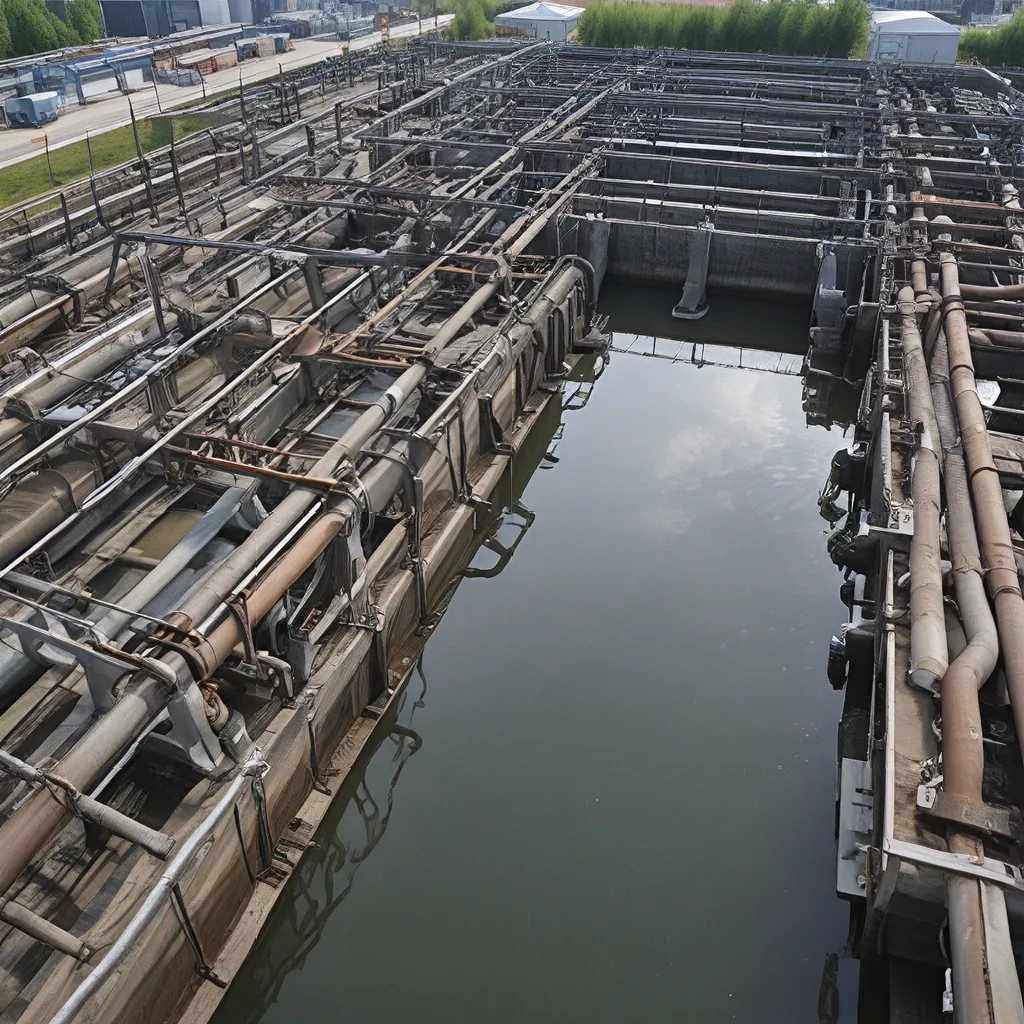
In the ever-evolving world of wastewater treatment, we’re witnessing a remarkable shift driven by the digital transformation and the advent of Industry 4.0 technologies. As a wastewater treatment enthusiast, I’m thrilled to explore how these cutting-edge advancements are revolutionizing the way we approach this critical sector.
Unlocking the Power of Digital Twins
One of the most exciting developments in wastewater treatment is the rise of digital twins – virtual replicas of physical systems that allow us to simulate, test, and optimize processes with unprecedented precision. These digital counterparts, like Jacobs’ Replica platform, are transforming the way we manage industrial water and wastewater facilities.
By developing detailed process simulations of design and operational metrics, digital twins empower us to improve performance and reduce both capital and operating costs. I’ve been amazed by how these virtual models can help us identify bottlenecks, test new technologies, and optimize workflows – all without disrupting the actual physical systems. It’s like having a crystal ball into the future of our wastewater treatment operations!
Integrating Industrial Wearables and IoT
Another remarkable development in the Industry 4.0 revolution is the integration of industrial wearables and IoT (Internet of Things) sensors. As Jacobs has done, leveraging these connected technologies can revolutionize the way we monitor and manage our wastewater treatment facilities.
Imagine being able to track the real-time location and activities of your workers, ensuring their safety and productivity. Or visualizing the performance of critical equipment through a centralized IoT platform, allowing you to proactively address issues before they become major problems. The possibilities are truly endless!
I’ve witnessed firsthand how these connected worker solutions and data visualization tools can enhance operational efficiency, improve environmental compliance, and elevate worker safety. It’s a game-changer for the wastewater treatment industry.
Embracing AR and VR for Training and Simulations
In addition to digital twins and industrial wearables, the wastewater treatment sector is also embracing the power of augmented reality (AR) and virtual reality (VR) technologies. These immersive platforms are revolutionizing the way we approach health and safety training, as well as process simulations.
Imagine being able to train your employees in a safe, virtual environment, where they can learn to navigate complex machinery and emergency procedures without putting themselves or the facility at risk. Jacobs’ gamified desktop application is a prime example of how these innovative training solutions can make learning more engaging and memorable.
Beyond training, AR and VR also have the potential to transform the way we visualize and interact with wastewater treatment processes. Imagine being able to step inside a virtual model of your facility, identifying potential issues, and testing new designs before making any physical changes. The implications for cost savings, efficiency, and safety are truly profound.
Navigating the Challenges of Digital Transformation
As exciting as these Industry 4.0 technologies may be, the digital transformation of the wastewater treatment sector is not without its challenges. Cybersecurity, data management, and workforce upskilling are just a few of the hurdles that companies must navigate.
Ensuring the security of critical infrastructure and sensitive data is paramount, as research has shown, the growing cyber risks that come with increased connectivity. Robust data governance strategies and employee training will be crucial in mitigating these threats.
Moreover, the adoption of advanced technologies often requires a significant investment in workforce development. Upskilling employees to leverage these cutting-edge tools and platforms is essential for unlocking their full potential. Companies that prioritize continuous learning and innovation will be best positioned to succeed in this digital era.
The Future of Wastewater Treatment: A Connected, Sustainable Ecosystem
As I reflect on the remarkable changes taking place in the wastewater treatment industry, I’m filled with a sense of optimism and wonder. The integration of Industry 4.0 technologies is not just about improving operational efficiency – it’s about transforming the very way we approach sustainability and environmental stewardship.
By embracing digital twins, industrial wearables, IoT, and AR/VR, we’re creating a more connected, data-driven ecosystem that can better address the pressing challenges of our time. From water scarcity and climate change to environmental justice and community resilience, these innovative solutions are poised to play a pivotal role in wastewater treatment services that are fit for the future.
As we continue to push the boundaries of what’s possible, I’m confident that the wastewater treatment industry will lead the way in showcasing the transformative power of Industry 4.0. By embracing these cutting-edge technologies, we can create a more sustainable, resilient, and equitable world, one flush at a time.